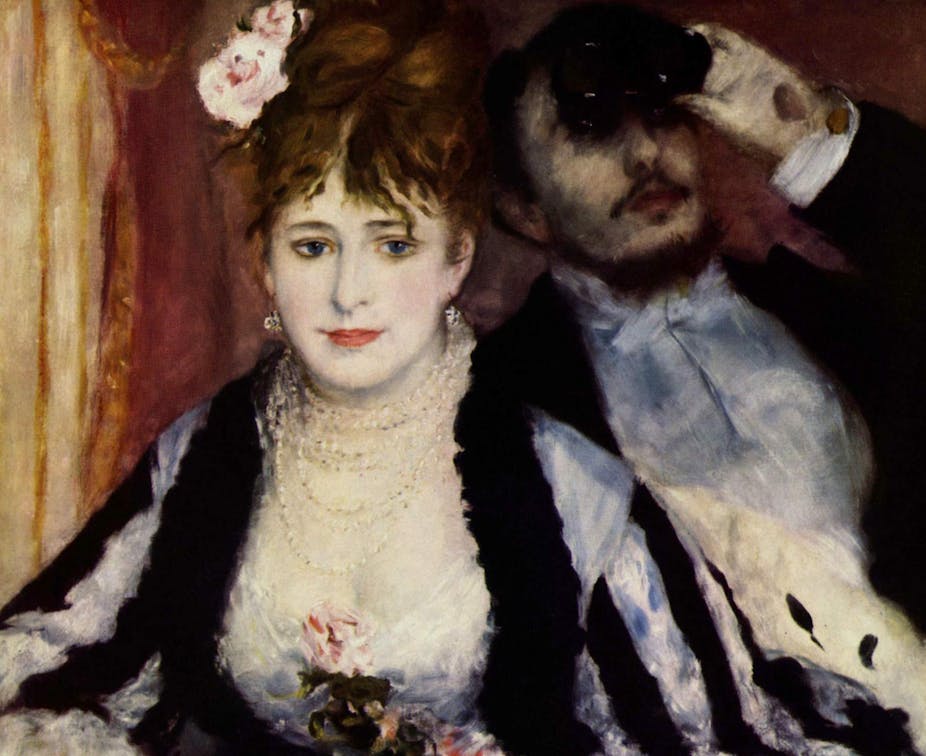“Wouldn’t you just die without Mahler?” This classic line from Willy Russell’s Educating Rita, spoken by the broken aesthete Trish, signifies both main character Rita’s entry into the realms of cultured bohemia and the hysterical emotiveness often associated with the late composer.
A confession. I used to think I suffered from some mild form of anhedonia, an alienation from responses like those experienced by Trish. An aesthetic deficiency which meant I wasn’t able to be taken cognitive hostage by the cultural works I had consumed after reading heady reviews. Novels that had left the reviewer breathless, over-awed and discombobulated, frequently after having been compelled to read the work in a single sitting. Works of art guaranteed to evoke powerful emotional responses often left me a bit, well, not that fussed. This issue was compounded by the fact that I had worked in the arts for nearly 20 years.
Trish’s exclamation has been echoing in my ears in the last few weeks after a series of equally daft pronouncements have hit the headlines. So much so, that I’ve realised that the problem was not anhedonia at all, but rather with the arts establishment itself.
In a recent interview about cuts to arts funding, theatre director Michael Grandage said, “We’re surrounded by philistines. Everybody’s letting everybody else just dumb down without question.”
A few weeks earlier the Guardian reported that the National Gallery was to acquire its first major American painting. The gallery said it was buying George Bellows’ 1912 masterpiece Men of the Docks for $25.5m (£15.6m). Bellows is normally seen in the context of other American painters but in London will hang alongside works by Manet and Monet.
“It will be rather like seeing a Turner in the Louvre or a Wilkie in Munich,” Nicholas Penny, director of the National Gallery, said. Men of the Docks is a very European painting, so Penny says that visitors to the gallery would be able to see the debt he owed to Manet as well as Goya and earlier Spanish art. The painting “will have a revolutionary effect on the collection and an electrifying effect on visitors”, he said.
And as the National Theatre celebrated 50 years in 2013, Michael Billington wrote of the venue:
Even though four of its five directors – Peter Hall, Richard Eyre, Trevor Nunn and Nicholas Hytner – are Cambridge English graduates, there is still enormous diversity within that group.
These are just three great examples of the sounds we in the arts and cultural sector have heard too many times before. The sound of privilege, with its concomitant lack of self-awareness. The sound of those who should be champions of cultural democracy blaring like gatekeepers of the elite. The sound of guns going off in holsters.
The day before Penny’s announcement, the inaugural public event of the Warwick Commission on Cultural Value was held at the British Library in London. The Commission, an “arts led, academically informed, publicly engaged” two-year project, chaired by Vikki Heywood CBE, will undertake a comprehensive and holistic investigation into the future of cultural value.
The Warwick Commission is about advocacy for the arts. It’s about being able to make robust, evidence-based arguments to government about the value of the arts in the hope that this will make difference in actual funding terms. The assembled commissioners are intelligent, passionate, gifted people. Yet they are all on the inside of the castle, looking out. They are art, not audience. They are product, not market. They are supply, not demand. Their challenge, above and beyond the task they have set themselves, is to be clear not about whom they are speaking for, but who they should be speaking to.
Cultural policy expert John Holden has written that what you value, and the language and metrics that you use to describe that value, depends on who you are. More than ten years ago, a Valuing Culture event was held at the National Theatre Studio. As Adrian Ellis argued at the time, within the cultural value debate, a new “common, mutually intelligible language” needs to be developed. Charles Saumarez Smith, a former holder of Nicholas Penny’s current role, argued that the previous language of cultural value suffered from its dependence upon a set of beliefs which were “innocently and indefensibly paternalistic”. For Holden, the arts had lost the vocabulary to make the advocacy case.
Nicholas Hytner, he of the enormously diverse variety, spoke of how the arts have lost their self-confidence and a belief in the strength of their advocacy argument except as relatively minor tools of social and economic policy. In the absence of a well-informed and reasoned argument, funders and policy makers will maintain only a partial view of what of arts organisations do, whilst the arts managers running those organisations will “chaff and sulk” at the injustice of it all. I wonder how much has changed in the intervening years?
The language of arts advocacy must be one that has broad appeal, and one that is relevant to, and resonant with, the majority of people. We are no more surrounded by philistines than we are likely to die without Mahler, and for Bellows’ painting to have the desired effect on visitors, the National Gallery will need to run a high voltage current through its gallery floor.
While the arts sector continues to believe that it is best placed to advocate on its own behalf, and whilst those charged with leading the debate remain wholly unrepresentative of the public, I fear I will always remain slightly at odds with the sector, out of time and out of place. Rather like a Turner in the Louvre.

